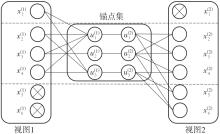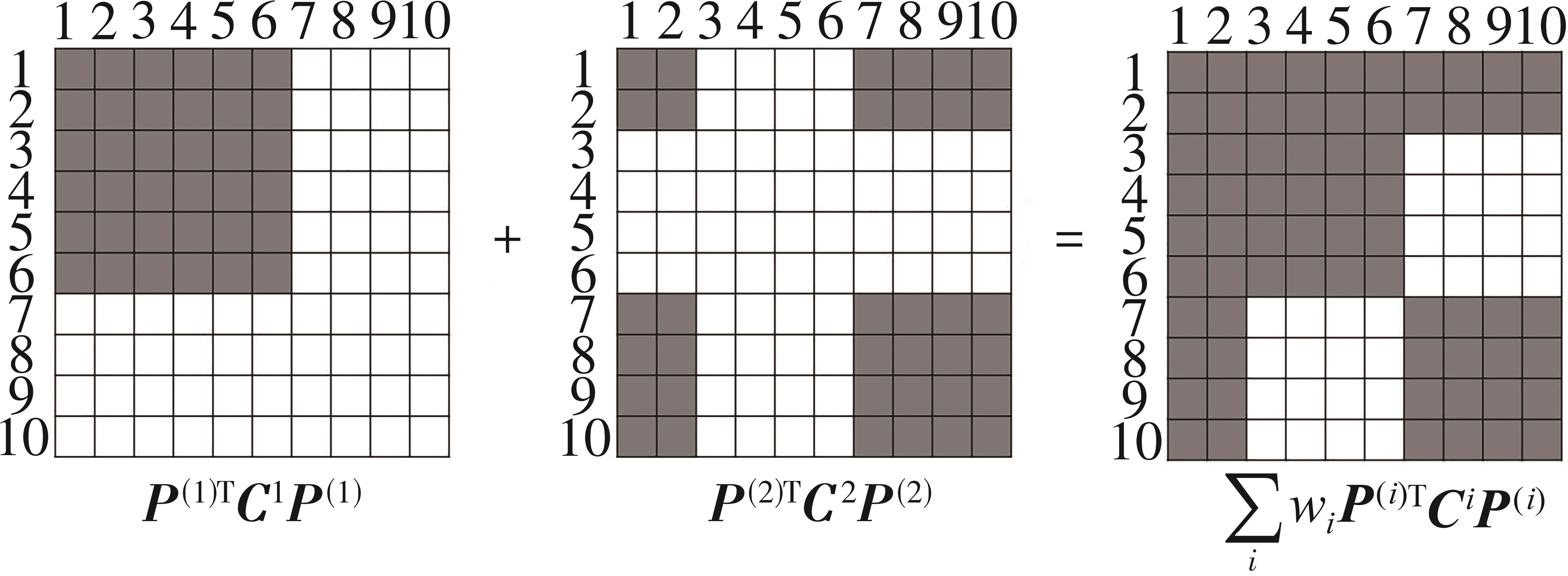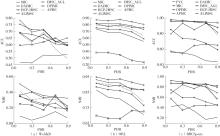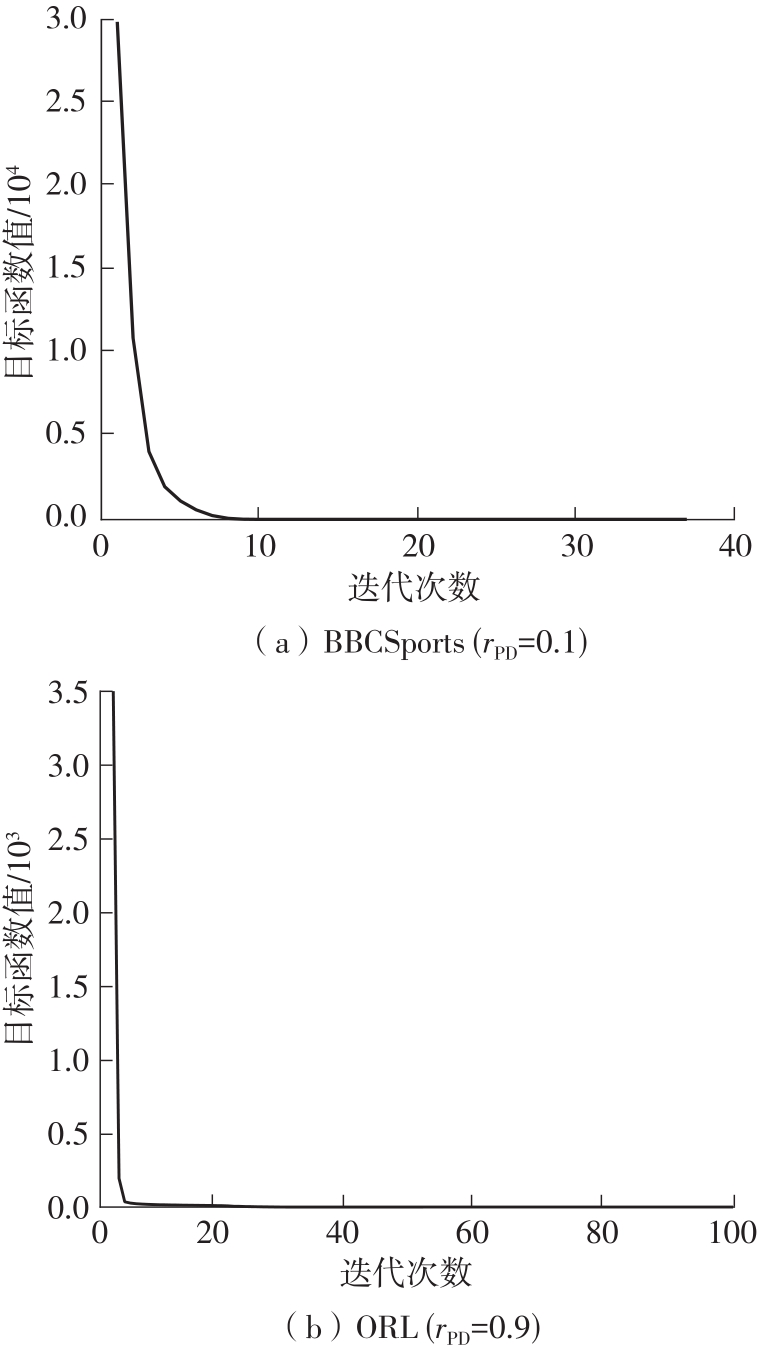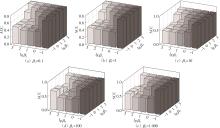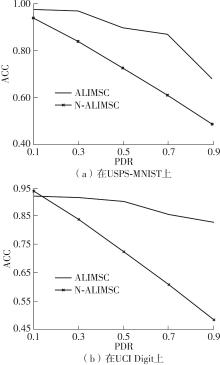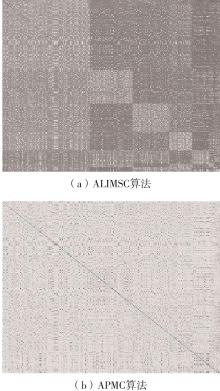Journal of South China University of Technology(Natural Science Edition) ›› 2022, Vol. 50 ›› Issue (12): 60-70.doi: 10.12141/j.issn.1000-565X.220069
Special Issue: 2022年计算机科学与技术
• Computer Science & Technology • Previous Articles Next Articles
Anchor Graph Based Low-Rank Incomplete Multi-View Subspace Clustering
LIU Xiaolan SHI Zongyu YE Zehui LIANG Yong
- School of Mathematics,South China University of Technology,Guangzhou 510460,Guangdong,China
-
Received:2022-02-21Online:2022-12-25Published:2022-07-15 -
Contact:梁勇(1978-),男,博士,讲师,主要从事非线性波、优化算法研究。 E-mail:dyliang@scut.edu.cn -
About author:刘小兰(1979-),女,博士,副教授,主要从事优化算法与机器学习研究.E-mail:liuxl@scut.edu.cn. -
Supported by:the Natural Science Foundation of Guangdong Province(2020A1515010699)
CLC Number:
Cite this article
LIU Xiaolan, SHI Zongyu, YE Zehui, et al. Anchor Graph Based Low-Rank Incomplete Multi-View Subspace Clustering[J]. Journal of South China University of Technology(Natural Science Edition), 2022, 50(12): 60-70.
share this article
Table 2
Clustering results of eight algorithms on USPS-MNIST and UCI Digit datasets"
| 数据集 | 算法 | ACC | NMI | ||||||||
|---|---|---|---|---|---|---|---|---|---|---|---|
| rPD=0.1 | rPD=0.3 | rPD=0.5 | rPD=0.7 | rPD=0.9 | rPD=0.1 | rPD=0.3 | rPD=0.5 | rPD=0.7 | rPD=0.9 | ||
| USPS-MNIST | PVC | 0.502 | 0.468 | 0.432 | 0.444 | 0.353 | 0.400 | 0.392 | 0.349 | 0.337 | 0.274 |
| MIC | 0.832 | 0.810 | 0.734 | 0.690 | 0.610 | 0.759 | 0.695 | 0.615 | 0.574 | 0.569 | |
| DAIMC | 0.834 | 0.795 | 0.670 | 0.576 | 0.457 | 0.761 | 0.681 | 0.556 | 0.493 | 0.390 | |
| IMSC_AGL | 0.964 | 0.934 | 0.854 | 0.770 | 0.739 | 0.934 | 0.892 | 0.776 | 0.682 | 0.624 | |
| OPIMC | 0.580 | 0.502 | 0.486 | 0.438 | 0.354 | 0.603 | 0.487 | 0.461 | 0.422 | 0.293 | |
| HCP-IMSC | 0.949 | 0.938 | 0.887 | 0.810 | 0.662 | 0.900 | 0.881 | 0.800 | 0.734 | 0.576 | |
| APMC | 0.964 | 0.936 | 0.846 | 0.810 | 0.574 | 0.926 | 0.881 | 0.741 | 0.707 | 0.466 | |
| ALIMSC | 0.975 | 0.968 | 0.896 | 0.868 | 0.678 | 0.950 | 0.940 | 0.810 | 0.790 | 0.539 | |
| UCI Digit | PVC | 0.605 | 0.537 | 0.566 | 0.522 | 0.554 | 0.580 | 0.531 | 0.544 | 0.482 | 0.510 |
| MIC | 0.835 | 0.795 | 0.653 | 0.535 | 0.412 | 0.728 | 0.690 | 0.577 | 0.522 | 0.418 | |
| DAIMC | 0.739 | 0.674 | 0.566 | 0.491 | 0.453 | 0.647 | 0.589 | 0.530 | 0.469 | 0.429 | |
| IMSC_AGL | 0.891 | 0.890 | 0.899 | 0.849 | 0.731 | 0.819 | 0.813 | 0.819 | 0.757 | 0.663 | |
| OPIMC | 0.350 | 0.223 | 0.219 | 0.209 | 0.295 | 0.465 | 0.285 | 0.139 | 0.164 | 0.313 | |
| HCP-IMSC | 0.795 | 0.861 | 0.772 | 0.771 | 0.701 | 0.745 | 0.772 | 0.725 | 0.702 | 0.611 | |
| APMC | 0.817 | 0.814 | 0.811 | 0.826 | 0.794 | 0.832 | 0.820 | 0.814 | 0.714 | 0.682 | |
| ALIMSC | 0.921 | 0.915 | 0.902 | 0.856 | 0.828 | 0.874 | 0.849 | 0.831 | 0.763 | 0.726 | |
Table 3
Clustering results of eight algorithms on 3Source dataset"
| 算法 | ACC | NMI | ||||||
|---|---|---|---|---|---|---|---|---|
| BBC-Guardian | BBC-Reuters | Guardian-Reuters | 3-Views | BBC-Guardian | BBC-Reuters | Guardian-Reuters | 3-Views | |
| PVC | 0.662 | 0.578 | 0.001 | 0.569 | 0.569 | 0.642 | ||
| MIC | 0.731 | 0.772 | 0.654 | 0.817 | 0.551 | 0.639 | 0.538 | 0.675 |
| DAIMC | 0.540 | 0.564 | 0.512 | 0.596 | 0.426 | 0.448 | 0.381 | 0.473 |
| IMSC_AGL | 0.870 | 0.853 | 0.741 | 0.796 | 0.712 | 0.712 | 0.562 | 0.685 |
| OPIMC | 0.531 | 0.529 | 0.457 | 0.671 | 0.318 | 0.343 | 0.294 | 0.521 |
| HCP-IMSC | 0.818 | 0.877 | 0.813 | 0.899 | 0.654 | 0.743 | 0.614 | 0.781 |
| APMC | 0.837 | 0.845 | 0.849 | 0.851 | 0.680 | 0.687 | 0.706 | 0.702 |
| ALIMSC | 0.871 | 0.894 | 0.872 | 0.899 | 0.734 | 0.759 | 0.721 | 0.767 |
| 1 | KUMAR A, DAUMÉ H .A co-training approach for multi-view spectral clustering [C]∥ Proceedings of the 28th International Conference on Machine Learning.New York:ACM,2011:393-400. |
| 2 | YANG Y, WANG H .Multi-view clustering:a survey [J].Big Data Mining and Analytics,2018,1(2):83-107. |
| 3 | GAO H, NIE F, LI X,et al .Multi-view subspace clustering [C]∥ Proceedings of 2015 IEEE International Conference on Computer Vision.Santiago:IEEE,2015:4238-4246. |
| 4 | LI S Y, JIANG Y, ZHOU Z H .Partial multi-view clustering [C]∥ Proceedings of the 28th AAAI Conference on Artificial Intelligence.Québec City:AAAI,2014:1968-1974. |
| 5 | SHAO W, HE L, YU P S .Multiple incomplete views clustering via weighted nonnegative matrix factorization with L2,1 regularization [C]∥ Proceedings of 2015 European Conference on Machine Learning and Knowledge Discovery in Databases.Porto:Springer,2015:318-334. |
| 6 | ZHAO H, LIU H, FU Y .Incomplete multi-modal visual data grouping [C]∥ Proceedings of the 25th International Joint Conference on Artificial Intelligence.New York:AAAI,2016:2392-2398. |
| 7 | HU M, CHEN S .Doubly aligned incomplete multi-view clustering [C]∥ Proceedings of the 27th International Joint Conference on Artificial Intelligence.Stockholm:IJCAI Organization,2018:2262-2268. |
| 8 | WANG Q, DING Z, TAO Z,et al .Partial multi-view clustering via consistent GAN [C]∥ Proceedings of 2018 IEEE International Conference on Data Mining.New York: IEEE,2018:1290-1295. |
| 9 | HU M, CHEN S .One-pass incomplete multi-view clustering [C]∥ Proceedings of the 33rd AAAI Conference on Artificial Intelligence.Honolulu:AAAI,2019:3838-3845. |
| 10 | WEN J, XU Y, LIU H .Incomplete multiview spectral clustering with adaptive graph learning [J].IEEE Transactions on Cybernetics,2018,50(4):1418-1429. |
| 11 | WEN J, SUN H, FEI L,et al .Consensus guided incomplete multi-view spectral clustering [J].Neural Networks,2021,133:207-219. |
| 12 | LI Z, TANG C, ZHENG X,et al .High-order correlation preserved incomplete multi-view subspace clustering [J].IEEE Transactions on Image Processing,2022,31:2067-2080. |
| 13 | LIU W, WANG J, KUMAR S,et al .Hashing with graphs [C]∥ Proceedings of the 28th International Conference on Machine Learning.New York:ACM,2011:1-8. |
| 14 | KANG Z, LIN Z, ZHU X,et al .Structured graph learning for scalable subspace clustering:from single view to multiview [J].IEEE Transactions on Cybernetics,2022,52(9):8976-8986. |
| 15 | GUO J, YE J .Anchors bring ease:an embarrassingly simple approach to partial multi-view clustering [C]∥ Proceedings of the 33rd AAAI Conference on Artificial Intelligence.Honolulu:AAAI,2019:118-125. |
| 16 | LIU G, LIN Z, YAN S,et al .Robust recovery of subspace structures by low-rank representation [J].IEEE Transactions on Pattern Analysis and Machine Intelligence,2012,35(1):171-184. |
| 17 | BOYD S, PARIKH N, CHU E .Distributed optimization and statistical learning via the alternating direction method of multipliers [M].Norwell:Now Publishers Inc.,2011. |
| 18 | CAI J F, CANDÈS E J, SHEN Z .A singular value thresholding algorithm for matrix completion [J].SIAM Journal on Optimization,2010,20(4):1956-1982. |
| 19 | NIE F, WANG X, JORDAN M,et al .The constrained Laplacian rank algorithm for graph-based clustering [C]∥ Proceedings of the 30th AAAI Conference on Artificial Intelligence.Phoenix:AAAI,2016:1969-1976. |
| 20 | LV J, KANG Z, WANG B,et al .Multi-view subspace clustering via partition fusion [J].Information Sciences,2021,560:410-423. |
| 21 | GREENE D, CUNNINGHAM P .A matrix factorization approach for integrating multiple data views [C]∥ Proceedings of 2009 European Conference on Machine Learning and Knowledge Discovery in Databases.Bled:Springer,2009:423-438. |
| 22 | HULL J J .A database for handwritten text recognition research [J].IEEE Transactions on Pattern Analysis and Machine Intelligence,1994,16(5):550-554. |
| 23 | LECUN Y, BOTTOU L, BENGIO Y,et al .Gradient-based learning applied to document recognition [J].Proceedings of the IEEE,1998,86(11):2278-2324. |
| 24 | JAIN A K, DUIN R P W, MAO J .Statistical pattern recognition:a review [J].IEEE Transactions on Pattern Analysis and Machine Intelligence,2000,22(1):4-37. |
| 25 | YIN Q, WU S, WANG L .Incomplete multi-view clustering via subspace learning [C]∥ Proceedings of the 24th ACM International on Conference on Information and Knowledge Management.New York:ACM,2015:383-392. |
| 26 | XIA R, PAN Y, DU L,et al .Robust multi-view spectral clustering via low-rank and sparse decomposition [C]∥ Proceedings of the 28th AAAI Conference on Artificial Intelligence.Québec City:AAAI,2014:2149-2155. |
| 27 | 刘小兰,叶泽慧 .基于StarGAN和子空间学习的缺失多视图聚类 [J].华南理工大学学报(自然科学版),2020,48(11):87-98. |
| LIU Xiaolan, YE Zehui .Partial multi-view clustering based on StarGAN and subspace learning [J].Journal of South China University of Technology(Natural Science Edition),2020,48(11):87-98. |
| [1] | LIN Peiqun, GONG Minping, ZHOU Chuhao. User Portrait Method of Freeway Freight Car for Risk Identification of Freight Transportation [J]. Journal of South China University of Technology(Natural Science Edition), 2023, 51(6): 1-9. |
| [2] | ZHENG Sifan, WANG Weixing, HE Zhanhua, et al. Research on Swing Amplitude Detection of Automobile Wiper with Two Granularity Optical Flow Manifold Learning#br# [J]. Journal of South China University of Technology (Natural Science Edition), 2020, 48(1): 123-132. |
| [3] | LIU Xiaolan PAN Gan YI Miao LI Zhipeng. Distributed Low-rank Tensor Subspace Clustering Algorithm [J]. Journal of South China University of Technology (Natural Science Edition), 2019, 47(8): 77-83,95. |
| [4] | CHEN Weiya PAN Xin FANG Xiaoping. Short-term Prediction of Passenger Flow on Bus Routes Based on K-means Clustering Combination Models [J]. Journal of South China University of Technology (Natural Science Edition), 2019, 47(4): 83-89,113. |
| [5] | Li Wei Huyan Ju Sha Ai-min Sun Zhao-yun Hao Xue-li . Pavement Crack Detection Based on Two - Scale Clustering Algorithm and 3D Data#br# [J]. Journal of South China University of Technology (Natural Science Edition), 2015, 43(8): 99-105. |
| [6] | Wang Li- na Chen Xiao- hong. GK Clustering Model Based on Optimal Initial Clustering Center of AFS [J]. Journal of South China University of Technology (Natural Science Edition), 2014, 42(9): 65-69. |
| [7] | Wang Yong Mao Hai- jun Liu Yong He Jie. Optimization of Vehicle Routing Problem Based on Multiple Customer Characteristics [J]. Journal of South China University of Technology (Natural Science Edition), 2014, 42(2): 116-124. |
| [8] | . Division of Coordinated Control Subareas Based on Group Dynamics Theory [J]. Journal of South China University of Technology (Natural Science Edition), 2013, 41(4): 77-82. |
| [9] | Sun Zhong-gao Zheng Zi-wei Xu Shao-juan. Dual Selection Mechanism-Based Clustering Algorithm for Wireless Sensor Networks [J]. Journal of South China University of Technology (Natural Science Edition), 2011, 39(10): 13-18. |
| [10] | Jiang Zhuo-lin Li Shao-fa Jia Xi-ping Zhu Hong-li . Target Tracking Based on Nonparametric Clustering and Multi-Scale Images [J]. Journal of South China University of Technology (Natural Science Edition), 2009, 37(1): 34-41. |
| [11] | Feng Shao-rong Xiao Wen-jun . High-Efficiency Text Clustering Algorithm Based on Semantic Distance [J]. Journal of South China University of Technology (Natural Science Edition), 2008, 36(5): 30-37. |
| [12] | Deng Jian-shuang Zheng Qi-lun Peng Hong Deng Wei-wei . Clustering Algorithm Based on Dynamic Division of Connected Graph [J]. Journal of South China University of Technology (Natural Science Edition), 2007, 35(1): 118-122. |
| Viewed | ||||||
|
Full text |
|
|||||
|
Abstract |
|
|||||
